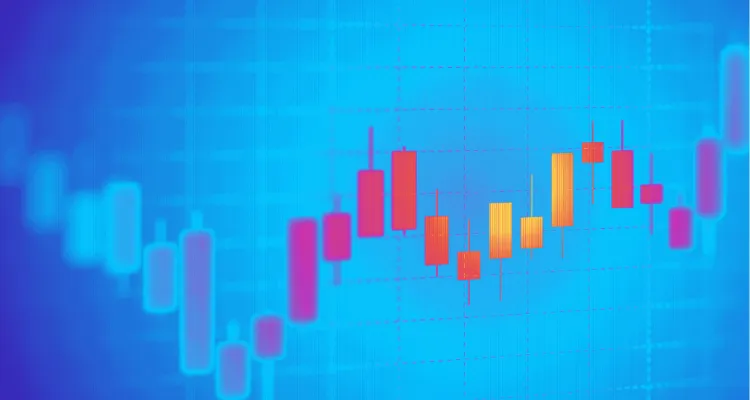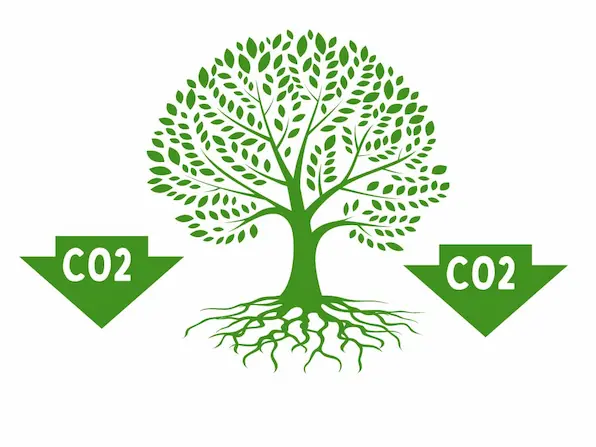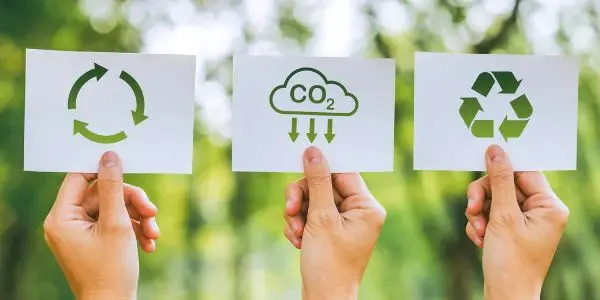Carbon Credit Markets: Trends and Predictions
Carbon Credit Markets are developing rapidly.
Here we will explore the latest trends and predictions in carbon credit markets, offering insights into their evolving role combating climate change.
What Are Carbon Credit Markets?

As climate change becomes an increasingly urgent global issue, carbon credit markets have emerged as a pivotal tool in the effort to reduce greenhouse gas emissions.
These markets allow businesses and governments to buy and sell carbon credits, effectively putting a price on carbon and incentivising reductions in emissions. Some are compulsory, some are voluntary, both are growing in scale.
Understanding the future of carbon markets is crucial for businesses, policymakers, and individuals adapting to a sustainable future.
Current State of Carbon Credit Markets

The carbon market is divided into two main types: compulsory markets and the voluntary market.
Compulsory ‘Compliance’ Markets:
Compulsory markets are regulated by governments and international bodies. The European Union Emissions Trading System (EU ETS) is the largest and most established compliance market, having been established in 2005.
The majority of compliance markets operate using a cap-and-trade system. This applies a limit (cap) is set on the total amount of greenhouse gases that can be emitted by all participating organisations.
These organisations receive or buy permits (carbon credits) that allow them to emit a certain amount of carbon dioxide. If they emit less than their allowance, they can sell their excess credits to others that have exceeded theirs. In this case the purchasing organisation is doing so to ‘offset’ their excess emissions.
The Voluntary Market:
The voluntary market operate outside of legislative frameworks, allowing businesses and individuals to voluntarily offset their carbon emissions.
This market is growing rapidly as more businesses set ambitious sustainability goals and commit to achieving net-zero emissions. As it grows, various carbon credit verification standards are becoming more established within the voluntary market.
The most common form of voluntary carbon credit generation is through investing in environmental projects that reduce or sequester carbon emissions to compensate for their own emissions. For example, investing in tree planting.
Trends Shaping the Future of Carbon Markets

1. Expansion of Regulatory Frameworks
Governments around the world are increasingly adopting carbon pricing mechanisms to drive forward decarbonisation, growing the scope and reach of the mandatory market.
The EU ETS continues to set the standard, but other regions are catching up. For instance, China launched its national carbon market in 2021, which is expected to become the world’s largest.
As more countries implement carbon pricing, the global carbon market is poised for significant expansion.
2. Integration of Carbon Credit Markets
Integration can lead to more efficient markets, reducing costs and encouraging broader participation.
Efforts are therefore underway to link various regional carbon markets, creating a more cohesive global system.
For example, the EU is exploring ways to connect its market with those of other regions, such as California and China. Global organisations, such as the International Carbon Action Partnership are also help to facilitate collaboration.

3. Rising Carbon Prices
As the urgency to combat climate change intensifies, carbon prices are expected to rise. This is true of both the compulsory and voluntary markets.
Higher carbon prices provide stronger financial incentives for businesses to reduce their emissions. Analysts therefore predict, for example, that the price of carbon in the EU ETS will push past €100 per ton by 2030, significantly higher than current levels.
Within the voluntary market, corporate demand for carbon credits is driving growth and pricing. Major corporations like Microsoft, Google, and Amazon are investing heavily in carbon offset projects, setting an example for others to follow.
Recent voluntary carbon trading patterns are available through the Ecosystem Marketplace.
4. Enhanced Transparency and Verification
Transparency and verification are critical to the credibility of carbon markets.
Advances in technology, such as blockchain and satellite monitoring, are improving the ability to track and verify carbon reductions. This ensures that credits represent real, additional, and permanent reductions in emissions.
5. Focus on Nature-Based Solutions
Nature-based solutions, such as reforestation, afforestation, and soil carbon sequestration, are gaining traction in carbon markets.
This focus is now also expanding into ‘Blue Carbon‘, or aquatic carbon stores. These can offer a more intensive rate of carbon sequestration compared to terrestrial options.

These projects offer co-benefits like biodiversity conservation and improved ecosystem services. As the scientific understanding of these solutions improves, they are becoming a more attractive option for carbon offsets.
6. Development of New Market Mechanisms
Innovative market mechanisms are emerging to address the shortcomings of existing systems.
For example, the Taskforce on Scaling Voluntary Carbon Markets is working to create a high-integrity market framework to ensure quality and transparency.
Additionally, the concept of carbon removal credits, which focus on mechanically removing CO2 from the atmosphere, and Insetting, the concept of credits developed within an organisation’s locality or supply chain, are both gaining attention.
Predictions for the Future of Carbon Markets

1. Global Carbon Credit Market Standardisation
In the coming years, we can expect greater standardisation across carbon markets.
International agreements and collaborations will likely lead to unified rules and procedures, making it easier for companies to navigate and participate in the market. This standardisation will enhance market efficiency and credibility.
2. Technological Innovations
Technological advancements will play a pivotal role in the evolution of carbon markets.
Improved carbon capture and storage (CCS) technologies, more accurate emissions monitoring systems, and blockchain for secure and transparent transactions will all contribute to a more robust market.

3. Increased Private Sector Engagement
The private sector will continue to play a crucial role in the carbon market’s growth.
Businesses will not only use carbon credits to meet their net-zero targets, but will also invest in carbon reduction technologies and projects. This increased engagement will drive innovation and scale in the market.
4. Enhanced Policy Support
Government policies will increasingly support the growth of carbon markets.
This includes financial incentives for low-carbon technologies, subsidies for carbon reduction projects, and stricter emissions regulations. Policymakers will recognise the importance of carbon markets in achieving climate goals and provide the necessary support.
Carbon Credit Markets: Part of a Sustainable Future

The future of carbon markets looks promising, with significant growth and innovation on the horizon.
As regulatory frameworks expand, prices rise, and technology improves, carbon markets will become an even more effective tool in the fight against climate change.
Businesses, policymakers, and individuals must stay informed and engaged with these developments to leverage the full potential of carbon markets in achieving a sustainable future.
Carbon Credits will form a vital part of the drive towards Net Zero in business. If you’d like to learn more about this broader strategic role, then we recommend you check out our Net Zero Business Starter Guide. You can also learn the Basics of Carbon Offsetting through our summary.
Finally, let us know your own thoughts on carbon credits and the carbon market in the comments section below. How do you see it developing? Are you currently purchasing credits, and if so how do you see this developing in the coming year? We’d love to hear your views.







